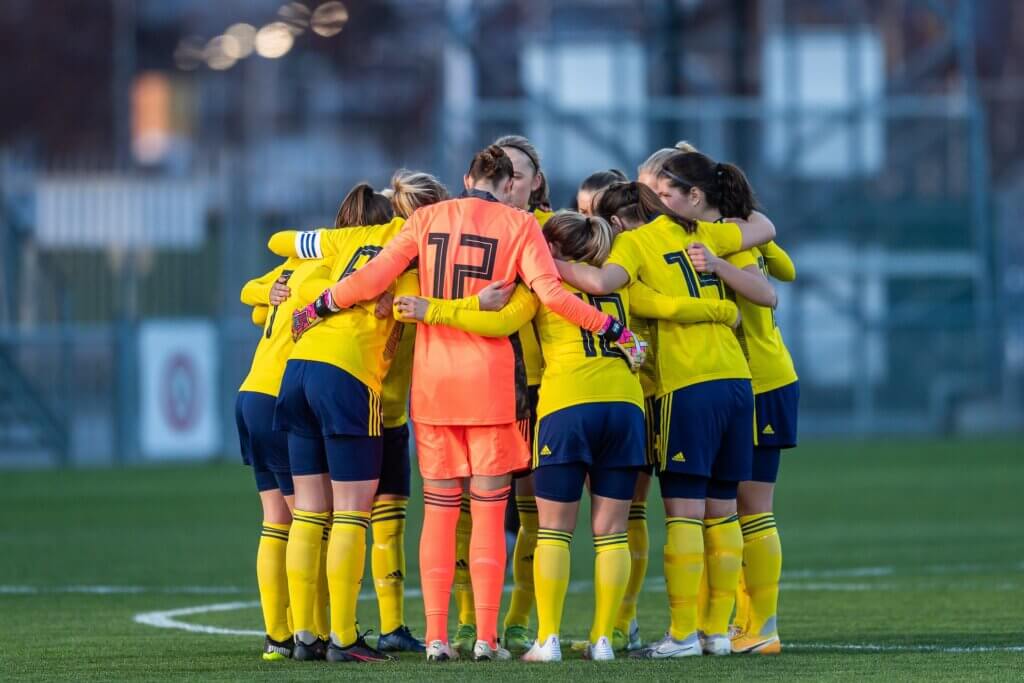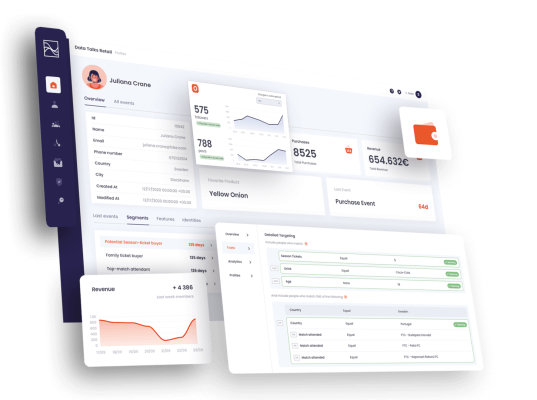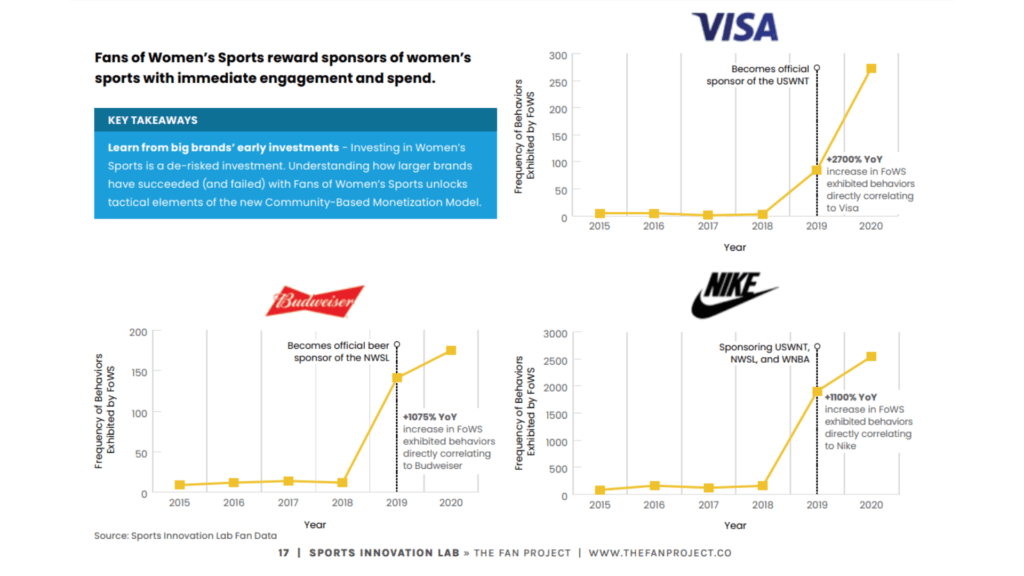
At the end of November 2023, many women and supporters of women’s sports celebrated after seeing Deloitte‘s press release on women’s sports breaking the billion-dollar barrier. In the release, Deloitte asserted: “Women’s elite sports to generate more than $1 billion in revenue in 2024”. And now it is 2024. What is the significance of women’s sports’ billion-dollar valuation for the different stakeholders involved? Let’s discuss this and more in this blog post.
Before we dive right in...
Subscribe to our blog today to ensure that you never miss valuable posts such as this one. We are passionate about helping sports organizations deliver a world-class fan experience, because better fan experience means better business. So why not use this opportunity to the fullest?

The significance of women’s sports’ billion dollar valuation by stakeholder
Before we dive into this topic, it is important to note that on a societal level, when women’s sports grow, all of society benefits. Equality is not just a thing for the woke. It is a huge benefit to all of society. Now of course a billion-dollar valuation is nowhere near the value that women’s sports can bring but this is a great start. Furthermore, this valuation is nowhere near men’s sports’ valuation but then again, men’s sports have been receiving support, investment, and funding for over a century now while women’s sports had previously been hindered from reaching the same potential. I am sure we can all agree that this is a magnificent step in the right direction for all.
Deloitte had previously projected that women’s sports would cross the billion-dollar market in 2030. So, the fact that this valuation will be met 6 years earlier than first anticipated is a remarkable testament to the exponential value and growth of women’s sports. Moreover, this valuation is at least 300 percent higher than the one from three years ago. A billion-dollar valuation, however, is just that. A valuation. An estimation of worth. Just because women’s sports are expected to reach this valuation this year doesn’t mean it will be so. Many women’s clubs are still struggling with selling tickets and merchandise and securing sponsorship agreements of higher value. The question then is, how can all stakeholders in sports, make this a reality?
The clubs and leagues themselves
I hope that this news gives women’s sports clubs and leagues confidence that the world is finally starting to believe what they have long believed – that there is great value in women’s sports. Now that everyone is aligned, how can clubs and leagues keep growing the value of women’s sports?
Understand women’s sports audiences

There is a false belief that is commonly held by women’s sports organisations. This belief is the idea that the majority of women’s sports fans are women. Did you know that in the US, for example, 86% of men described themselves as avid and/or casual fans while only 65% of women shared the same sentiment? Furthermore, only 14% of men said they were not fans of women’s sports at all while 36% of women said the same. That is a whopping 2.5 X the men who are not women’s sports supporters.
According to Nielsen’s sports, this percentage stood at 51% of men who are women’s sports fans to 49% of women, who are women’s sports fans. This breakdown covered countries such as the UK, France, Italy, the US, Germany, Spain, Australia and New Zealand. This report maintained that there is a gender balance in women’s sports fans.
What does this all mean? It means that there is no more room for guesswork. Women’s sports organisations should understand who their supporters are. Failure to do this will result in a lot of missed opportunities in securing sponsors and low sponsor activations. Moreover, selling tickets and merchandise through personalised campaigns will also be difficult to do.
Embrace technology
Now that we know that women’s sports will cross the billion-dollar valuation mark this year, we also know that, if they can do it once, they can do it twice, and so on. However, what men’s sports organisations realised around two to three years ago now was that growing exponentially in today’s landscape was impossible without embracing technology. The good news for women’s sports is that their fans are more tech-savvy than men’s sports fans. In fact, Creative Brief found that 74% of women’s sports fans like to keep up to date with the latest tech compared with only 44% of men’s sports fans. This further mandates a swift move towards embracing technology.
Before women’s sports organisations jump to technology that is nice to have, I suggest they start with those that are a must. For example, technology will help them understand their fans better while also helping them meet their commercial goals. Most of such technology uses supporter data to push clubs’ financial growth to the next level.
For this, I suggest an all-in-one, easy-to-use solution that:

Collects data in one place to give a complete view of each of the club's supporters, who they are, how they interact with your organisation, how often, and so forth

Cleans the data so that there are no duplicates

Updates the data with every supporter interaction in real-time so that the data is always useful and never obsolete

Makes this data available to other systems such as a customer relationship management system (CRM) and marketing automation tools.

Makes this data available to share with other people, in all departments, that may need it. And also relevant stakeholders such as sponsors

Displays data in easy-to-understand dashboards

Allows the club to get actionable insights from their data that can then power ALL supporter activities

Allows clubs to act on data through activations via email, SMS, social media, and other platforms.

Is compliant with all privacy regulations such as GDPR in Europe

To see how this would look in action, explore the Data Talks CDP demo >>
Sell more tickets
For me, this is probably the biggest significance of the women’s sports’ billion-dollar valuation – that women’s sports organisations can now sell more tickets. This is a double-edged sword. Women’s sports clubs that have been focusing more on giving tickets away, can now focus on selling more tickets. Additionally, clubs that have been selling a limited amount of tickets can start pushing to increase their ticket sales.
This is our forte here at Data Talks. We make it easy for sports organisations to sell tickets. Not only that but to sell merchandise and negotiate sponsorship agreements of higher value. We have helped sports organisations double their average order values. Where fans would previously spend around €20 per purchase, now they are spending around €42, which is more than double. So, we are more than happy to support women’s sports organisations that want to see similar results.
Brands
Investing in women’s sports is a no-brainer for brands. Here is why:

- “Fans of Women’s Sports are loyal to brands who invest in this space at much higher rates than general sports fans” (The Fan Project – Sports Innovation Lab). For example: Visa saw a 2,700% year-over-year increase after announcing its sponsorship of the U.S. women’s national soccer team and Budweiser saw a 1,075% after announcing their NWSL sponsorship.
- Fans expect brands to sponsor and activate sponsorship for women’s sports. So much so that Nike was subject to backlash after failing to produce any keeper shirts during the FIFA Women’s World Cup 2023. Once they finally did, replica Mary Earps England goalkeeper shirts sold out within five minutes in the England online store. Moreover, this number was comparable with the amount of goalkeeper kits on the website for previous men’s tournaments.
- According to Campaign Asia, “It is proven that when brands engage with professional women’s sports, fans are 54% more aware of sponsors and exhibit 45% more purchase intent.”
- A study by Wasserman also found that female athletes drive twice the social media engagement than male athletes.
Despite all of this, brands still resisted the opportunity to jump into the FIFA Women’s World Cup 2023 action. The tournament’s sponsorship revenue is estimated at just 18% of the men’s competition in 2022. So what does this mean for brands?
The time to invest in women’s sports is now, especially when the market isn’t oversaturated. Focusing on value alignment and long-term partnerships is another way for brands to stand out in this market. Numbers don’t lie.
Governing Bodies
The conversation around governing bodies is not an easy one to have because of the many contradictions that governing bodies often hold. For example, FIFA rejected less-than-satisfactory bids from broadcasters. This set a great example of how governing bodies can set higher standards and expectations for women’s sports. Yet, FIFA underestimated the demand for the Women’s World Cup 2023. The organisation had to then move the opening match to a bigger stadium to accommodate “unprecedented demand”.
Despite this kind of contradiction happening at the highest level of football’s governing body, so much can be learned from this. Sports organisations need to:

Encourage brands to invest in women's sports programs

Ensure equitable funding and financial support to women's sports organisations

Work continuously with media partners to increase coverage of women's sports, including broadcasting games, featuring athletes, and providing regular updates

Ensure representation of women in decision-making bodies, including governing boards and committees

Encourage diverse leadership within sports organizations to reflect the demographics of the athletes they serve

Implement policies and programs to prioritize and safeguard the health and well-being of female athletes
Media and broadcasters
For a long time, women’s sports’ media coverage was around 4%. There has been some improvement in this area with media coverage now at 15%. However, just like sponsorship, this is only a fraction of the men’s coverage. Moreover, studies have shown that women experience coverage that is not produced or marketed at the same standards as men. Additionally, when women do receive coverage, there have been high rates of objectification of female athletes and teams, “with broadcasts utilizing fewer camera angles and commentators reflecting on the appearance, parental figures, and/or spouse/family involvement of women athletes rather than strictly on their athleticism and in-game play” (Forbes).
Although social media and other new media have been instrumental to the success of women’s sports, traditional media remains an even bigger influencer of culture. Not only that, but revenue from media is essential for women’s sports organisations. Therefore, the media and broadcasters need to ramp up their engagement and coverage of women’s sports.
This is something that I discussed with the co-founder of Women in Action Sports Network, Alba Pardo, on our podcast, the Sports CDP crash course. Listen to that conversation below to hear Alba’s thoughts on this and more.

Listen to Alba Pardo on the Sports CDP Crash Course
Individuals working in sports and related industries
You see how I didn’t write “individuals working in women’s sports”. I have been to many events where the main topic was the growth of women’s sports. The common thread in this has been an overrepresentation of women and a gross underrepresentation of men. However, we know that this is not a true representation of the industry. Nor is it the best way of moving the needle. To do this and to it all, we need all hands on deck. Both men and women and all other genders.
So if you work in the sports industry, it is time to shift mindsets and go all in. Here are several ways that key stakeholders can push for the growth of women’s sports:
Executives
Budgeting and funding of women’s sports has always been an issue. Marketing and scheduling of women’s sports events should never be an afterthought. Instead, allocate the right resources to these events to produce the best possible results. Hire and engage the right personnel who will take this seriously. There are a lot of highly qualified individuals who know how to increase return on investment even from very low investments. And remember, technology is your best friend, use it to sell more tickets and merchandise and negotiate sponsorship agreements of higher value.
Hands-on people
I know that in some sports organisations understaffing and lack of resources plague the front office. Sometimes, and in some cases, so much so that there is barely enough time to plan anything let alone dream about taking your women’s sports organisation to the next level. Bring this up with your management to see if there are any ways to ease this. There are fortunately a lot of initiatives that support women’s sports. From the Gulf region to South America and Africa, a lot of governmental ministries, and other organisations are increasing investment in women’s sports so take advantage of these.
A lot of companies and startups are holding workshops to provide women’s sports organisations with the right skills and knowledge. We at Data Talks, for example, have been running “Commercialisation of women’s sports” workshops free of charge. We aim to equip women’s sports organisations to meet their commercial goals by selling more tickets and merchandise and negotiating sponsorship agreements of higher value. If you are curious about these, get in touch with me and I will be more than happy to assist.
Leaders in related industries
From broadcasters to sponsor brands and sports tech startups, there are so many people involved who can help take women’s sports beyond just the billion-dollar valuation. If you are a leader in these fields, make sure you understand the value of women’s sports. Make sure you keep up with insights from amazing thought leaders such as Sports Pro Media, Sports Innovation Lab, and The Collective at Wasserman, to name a few.
Just as I mentioned at the beginning, it is key to focus on long-term partnerships. Nike, Xero, Visa, and YouTube are wonderful examples of brands that have been committed to long-term partnerships. Before you start thinking that these are only brands with colossal resources, remember that the market is currently not saturated. So, now is the perfect time to start investing in women’s sports.
Know your numbers and facts. If you would like support and to be pointed in the right direction, we are here for you. Feel free to get in contact with me once again and I will point you in the right direction.
Concluding thoughts: the significance of women’s sports’ billion-dollar valuation
There is so much to say on this topic so I had to narrow down the scope. However, I hope that it is clear to you that this women’s sports’ billion-dollar valuation bears great significance for all stakeholders involved. From clubs and leagues to governing bodies, brands, broadcasters, and individuals working in sports, we can play an important role in catapulting women’s sports to new heights.
For clubs and leagues, it is important to understand your audiences, embrace technology, focus on selling more tickets and merchandise, and negotiate sponsorship agreements of higher value. Numbers don’t lie. They all point to the fact that women’s sports is a great product for brands to invest in. So, now is the time for brands to invest in women’s sports especially because the market is far from saturated. Governing bodies need to set and uphold higher standards for women’s sports and the media should continue to ramp up their engagement in women’s sports.
Finally, all organisations are made up of individuals. Therefore, it is key that we are all aligned in valuing women’s sports and taking them seriously. Women’s sports are not an afterthought. So, let’s dream big, and increase funding, marketing, and engagement from all genders, not just from women. When women’s sports win, we all win.
Sign up for our demo
If you would like to see how our product can help you by yourself, then sign up for our demo today and explore the demo at your own leisure.

